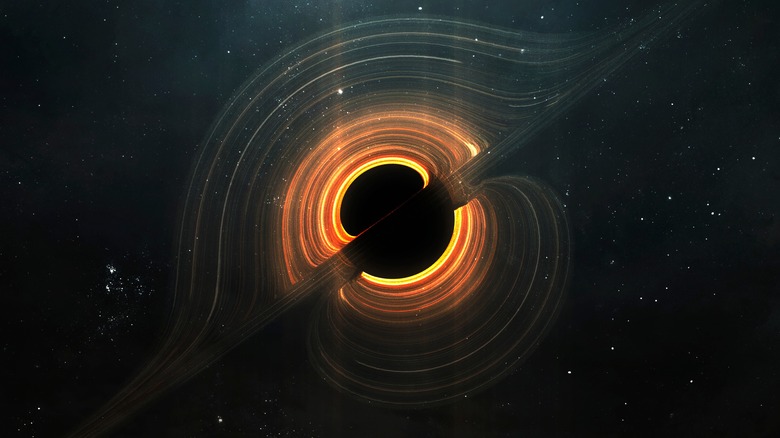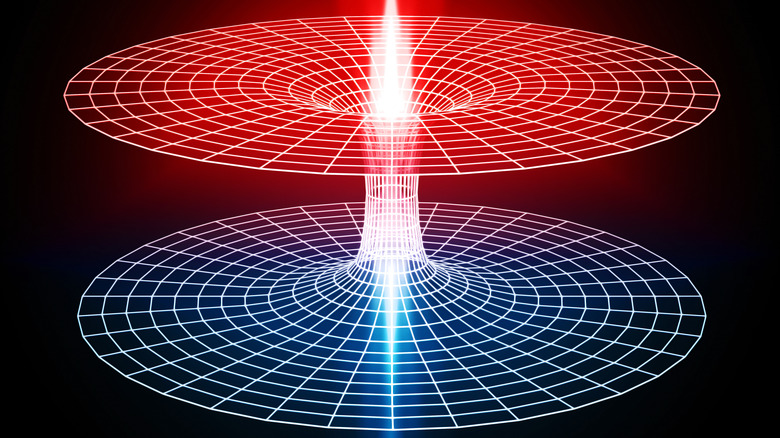What's The Difference Between A Black Hole And A Wormhole?
Despite having a "hole" in both of their names, there are some big differences between black holes and womholes. A black hole is something we know exists in the universe because scientists have observed them, while a wormhole remains theoretical, as one has yet to be discovered.
Black holes form when a star collapses in on itself and dies (via NASA). As the star runs out of fuel, its mass eventually flows into the core where the gravitational force becomes so heavy the core collapses and a supernova occurs. What's left is the black hole, which has since been compressed down into an extremely dense point called a singularity, where mass is packed into such a tiny space that our understanding of time and space fall apart, and — according to scientists — it actually doesn't exist. Once a black hole is established, it has such a strong gravitational pull that any object that comes near it is pulled inside. Even light is unable to escape. They're like roach motels — once you check in, you'll never check out.
The size of a black hole can be hard to comprehend. It's not so much the actual size of the hole, but the mount of mass it holds. According to NASA, the smallest black holes are thought to be size of a single atom, but contains the mass of a large mountain. The biggest holes are called "supermassive," and while thought to be the size of a large ball, contain the combined mass of more than one million suns. Scientists know for certain that at the center of every large galaxy lies a supermassive black hole. For instance, the one in the Milky Way galaxy is called Sagittarius A.
Wormholes fold space and time to create shortcuts
While a black hole leads to a dead end known as a singularity, a wormhole theoretically creates a bridge between two points in time and space. It's definitely science fiction, and this theoretical concept has been used in many fictional books and movies over the years. The truth is, scientists have absolutely no idea if it actually exists.
The wormhole theory is based on facts formed in 1915 by Albert Einstein's theory of general relativity. A year later, Austrian physicist Ludwig Flamm postulated about a "white hole" — the opposite time reversal of a black hole — where a tunnel could somehow connect entrances to both, and the theory of the wormhole was born. After honing his theory of general relativity for almost a decade, Einstein concluded that massive objects could actually warp the fabric of space-time, with the resulting distortion manifesting as gravity. While working with physicist Nathan Rosen in 1935, the two proposed the idea that "bridges" through space and time might exist to close the vast distances between two points, making space travel feasible, according to Space.com. That shortcut is known as the Einstein-Rosen bridge (also known as a wormhole).
Where a black hole sucks things in and never lets them go, a wormhole can move something from one place to another — possibly even through time and other universes — as long as we can find one, and eventually prove the theory stands up to reality.

